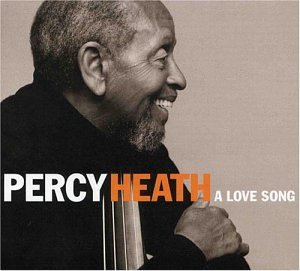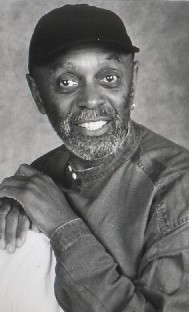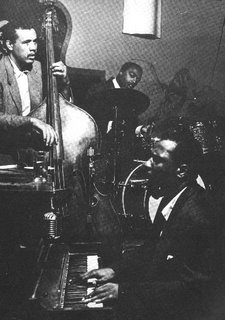Claudia Kuster - "CEO"?
Even big fraud started off small.
Resist the beginnings - we - may directly and indirectly pay for the dupes.
D WARNING
struggling to entrepreneurs / farmer.
-> Details of "takeover attempts" here lle
W arnungan A.
Claudia Kuster has changed the domicile.
This scam is well known, yet little attention is paid to it.
is new address: -
Claudia Kuster Frehner
Ulmenweg 2a
8856 Tuggen
So if an operation information on the charge of Tuggen SZ Office is required, the answer is
No entries
arises therefore ( only with a change of domicile) of the impression that the financial situation of this person would be "clean".
private prosecutions are known to be totalized to 08.03.2007: Fri 196'309 .70
As leaders of the GEON AG totalized prosecutions: Fri 659'039 .43
As the person responsible for bankruptcy Lowe AG (damage approx.): Fr.3 '000 '000 .00
addition, there are still spoken in court (but not months later fulfilled) claims to former Employees of tens of thousands of francs.
Neither the "acquisition of the machinery by a local political figure," nor the change the company name GEON AG ->> GEON Produktions AG, nor the "Replacing the Processor" (Jörg Lowe instead of Claudia Kuster), nor the sure is kept new correspondents (Helena, Andrea, Silvia, etc.) can improve something.
The whole thing is built on fraud, .... (for who builds on sand ...)
If you want to know what's going on with GEON AG, click here: GEON is more like it?
If you want to know how it ever came so far, click here: GEON felt like it so far?
If you want to know what the current brings day, you can (from HE) put the cards - or wait and see. We will report on it.
If Sie sich mit dem Verkauf Ihres Unternehmens tragen (Nachfolgeregelung, Verkauf, Kontinuität des Namens, Weiterbestand der Firma, etc.) lassen Sie sich AUF KEINEN FALL mit Claudia Kuster (bzw. mit ihr über "Firmenkonstrukte" verbundene Personen) ein, ein Desaster ist vorhersehbar.
Sie versucht immer wieder, entsprechende Kontakte zu knüpfen!
Für ein solches "Geschäft" sollte Ihnen Ihr Lebenswerk zu wertvoll sein.
Sie verlieren nicht nur Ihr Geld, auch der Name Ihrer Firma wird zunichte gemacht.
Hoffentlich helfen Ihnen nachstehend gelistete Beispiele!
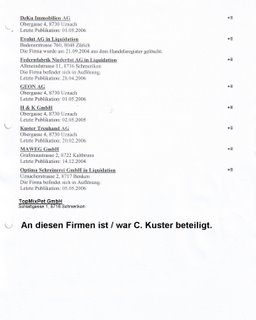
Verpassen Sie keine frisch eingetroffenen Informationen
(wählen Sie unter A nsicht den Punkt Neu Laden (Aktualisieren oder ähnlich), damit wird die Seite aktualisiert)
Einige Beispiele aus ihrer "erfolgreichen" Karriere:
EVOLUT AG Lachen / SZ
Beratung von Kunden im Finanzbereich
Kuster Claudia von Eschenbach SG in Uznach.
Präsidentin und "Geschäftsführerin" .

Benken GmbH OPTIMA Carpenter / SG
operating a carpentry
Kuster Claudia von Eschenbach SG Uznach.
partner and "CEO"

Federnfabrik Schmerikon Lowe AG / SG
production of springs of all types and their distribution
Kuster Claudia von Eschenbach SG in Uznach.
Mitglied mit Einzelunterschrift "Geschäftsführerin" .
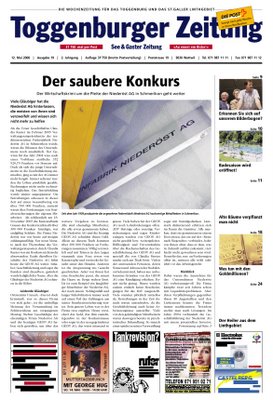
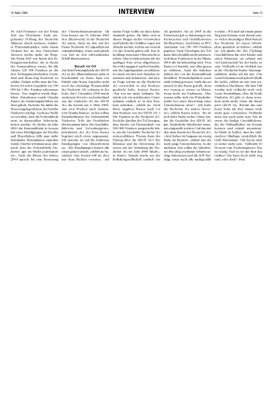
Dieser Konkurs wurde bewusst herbeigeführt,bei den Vorherigen haben wir noch nicht recherchiert. (Dies wäre eigentlich die "Arbeit" der Behörden, was sollen wir uns [so lange kein direkter Auftrag vorliegt] "den Arsch aufreissen"? ! )
Claudia Kuster gründete am 18/06/2004 a company GEON AG with the same activity as the Lowe AG.
The GEON Company "asleep" but until the "decisive moment". This was officially
of bankruptcy - the day of Lowe AG.
officially?
Before the bankruptcy Claudia Kuster has fraudulent (air - business - or imagination) transferred material and values \u200b\u200bin this GEON AG.
been in bankruptcy controls everything right?
Where are the inspectors who are interested in such machinations?
Here's a little proof that Claudia Kuster together with Jörg Lowe with the creation of GEON AG is a construct on the basis of "one-man operation" with "helpers" were planning.
For ease of implementation ("unencumbered") was (consciously and deliberately?) Worked towards bankruptcy.
We do not at the moment (due to space and other reasons) to the entire multi-page publication that "future plans".

publish By popular request, we here some pages of the bankruptcy office available.
inserted comments in red are from us, it is our opinion.
Look at the first four and the last page views.
Form your own opinion.
The red color us only serves to highlight it (directly) nothing to do with the (each occurring in a lie) Wangenröte of "managing directors".
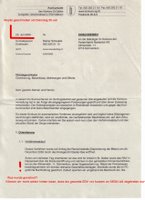

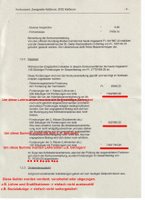
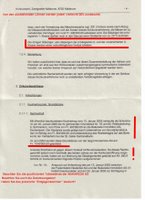

Such bankruptcies each year about 4.5 billion CHF (4.5 billion) to volkswirtschaftichem damage caused " ".
There are not only those responsible for SWISS, SWISS FIRST, etc. but "our friendly neighbors / neighbors" who rip off and cheat us. Similarly, an Alfred C. Claver (GEROLAG) may also be those people that the judge said will be charged:
Such persons have "a penchant for other people's money"
(Please not on our obsolete, things for your kind)
Tip Claudia Kuster (and all who want to dispute with such scams her life):
cleverness is one of them; crude bankruptcies are not clever!
Info to CK: These can "fly up", even if no authority makes sure we work on it!
(cheated and deceived people from the immediate environment (individuals, [Former] colleagues, associates, employees, etc.), we even help!
(Yes, Yes CK Look whom you trust, -. "Friends" can not post, if such "friends" not satisfied, they can even fall in the back)
[has not noticed? ;-)]
ertrogenen These funds are not lost or burned, they were the perpetrators of "ill-gotten with fraudulent and stolen".
We must these scams with pension cuts, tax increases (for reduced tax revenues and social security costs), additional deductions from wages (for social security, unemployment insurance, etc.) . Pay
Important Notice to all former Lowe - and current GEON - employees
(by chance your company is called the same as the title of the blog, which shows here or on the bottom link (You but such a story ..) reach. is [there are coincidences in life])
(you could several 10 `000 -. Lose francs)
Please Controls (! In your interest) as soon as possible to your AHV - and pension funds - accounts. (With regard to pension funds: ask your (n) Employee representatives [GK, MV in our opinion more of a "employer representative" is] whether the "workers' representatives - control," according to law * [not like HR R..] running). We have concrete information that Claudia Kuster these funds not properly settles
(that is for you ->
pension loss and specifications for the workers' representatives -> legal responsibility).
* [The "BVG - Guidance for Trustees" may be obtained at any time to go through it with us, Ask us]
A IK - (Individual account) you can extract the AVS request through the Internet or by mail
:
AHV - number, name, address, (in Internet: own email address) :
SVA
Brauer Strasse 54 9016 St. Gallen
direct request of the IK-statement via the Internet
Such "Directors and Managing director (whether large or small, thick or thin) is the craft down.
alone from the above-mentioned bankruptcy (OPTIMA and Lowe) results:
- for workers, communities, the District, the suppliers, the state
a loss of several million.
- Claudia Kuster for a profit of just those millions!!
(This is her again in private homes and [declared and undeclared] create securities and their "friends" keep in good spirits)
What do you too our laws (and their guardians) who allow such activity?
If "someone" put together by the community and their "by the court," someone "from the Land Registry," someone "from the tax office," someone "from the Social Security and any one know" about this "business woman "would replace (and should!) - this" someone "-.? group would be alarmed by the impending work
we want this
The reexamination of constructs that clarification with the cash flow, checking the ownership, understand finance, etc. would be associated with some research.
But we can not exactly a little help (The original documents are located at the tax office Uznach, the tax commissioner, they can call on their computer) declared
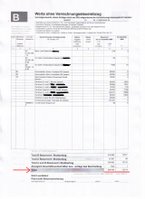
These assets Claudia Kuster (they must surely, otherwise "one note at a possible test something," the debtors give them in their tax returns also) ,
there was still much more to write lines about it would also still available!
excerpt EST (electronic tax return is filled via the Internet and the scrambled transmitted be. . The Internet is "safe" and "discrete", especially leaves one "no trace")

(image archive zsz)
is perhaps here, just the file:
Lowe AG
or OPTIMA
or Claudia Kuster GmbH (private)
or ....
or any other company construct studied by Claudia Kuster?
Probably not, otherwise this would be nice not to smile at Mr's.
If have not (or a hint "from the top")
yet to be added, on behalf of those affected say:
We wish the bankruptcy officials the necessary power and assertiveness,
this case (with all rhizomes) to do clean.
I might be up to the end of the 26.Dienstjahres (01/11/1980)
Scheuble Mr. Schade, you could not be done until 01.11.2006.
If that was not a huge stand?
What has hindered you? (? Effort again to work up moratorium)
If the work is too much and you do not support the downside,
- may or may we help?
I might be up to Christmas 2006?
Would make a great satisfaction to construct such a full and Lug Contributed to smash.
would be worth an official deserved recognition to show that our law enforcement agencies are able to detect such fraud and meet the full dupe.
Had an opportunity to some doubts about "our" case law remedy.
If all dupe (employees, communities, social institutions, suppliers, etc.) a joy to their sometimes substantial, to obtain in any case, lack of credit.
might be a "relief" for Claudia Kuster, with this kind of "management" (forced) to make final.

(Bildquelle: Beamtenkalender Kt.St.Gallen)
Leider wäre nach einer solchen Arbeit die Wahrscheinlichkeit sehr gross, dass alle [in den letzten zwei Fällen] geprellten Konkursgläubiger (Angestellte, Gemeinden, Kanton, Lieferanten, Staat, Sozialversicherungen, etc.) voll befriedigt werden könnten.
Leider wäre nach einer solchen Arbeit die Wahrscheinlichkeit sehr gross, dass der "armen Treuhänderin" nicht mehr viel vom ertrogenen Geld übrig bliebe.
Wollen wir dies?
Natürlich darf sie das "ehrlich erarbeitete Geld" behalten, daran ist niemand interessiert. Sollte sich trotzdem jemand an dieses (sofern denn überhaupt Vorhandene) wagen, würden wir uns Gegebenenfalls dafür einsetzen. ;-)
(Sie wissen, was wir erreichen,einige "Müsterchen" wurden verabreicht. Unser Wort Frau Kuster, wenn jemand an's "ehrlich erarbeitete" will, wir bieten Ihnen unsere Hilfe zum behalten desselben an.)
Bitte keine neuen Fälle, unsere Ãmter und Behörden sind schon überlastet!
Schauen Sie doch einmal in diesen "Amtsstuben - Handlungen" vorbei,
da finden Sie (vielleicht) eine Antwort
Was nützt es den Betroffenen, wenn sie vom Gericht ihr Recht erhalten,
the enforcement of this right, but not within the remit of this instance falls?
Each petty thief passed after the conviction "to the following instance to sit out the punishment.
"small fish" are easy to catch and are now "processed",
large and smelly fish can go back into the pond from which they come.
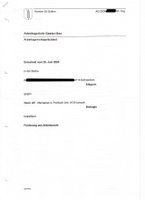
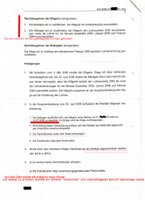
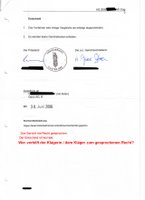

we leave this chapter, we pay for it or pay:
Let us instead, play a bit, even as time passes
Erstaunt oder Verblüfft?
Wir können zwar keine Gedanken lesen, aber wir können analysieren und recherchieren!
(Vor Abfallkübeln und Containern haben wir keine Scheu, wir können auch als "Geometer", "Kanalarbeiter", "Vertreter", usw. unsere "Arbeit" verrichten. "Zurückgelassene" Computer sowie "gelöschte" Dateien können auch was hergeben, und die globale Vernetzung [www.kuster-treuhand.ch) konnte mit passenden Werkzeugen "verbinden". [Kann mal vorkommen, dass ein Mitglied wegen einem "Hundeli" den gefassten Auftrag nicht fertig erledigt. ;-) ])
FREUDE HERRSCHT
Im Moment läuft ein VERFAHREN gegen Claudia Kuster (privat).
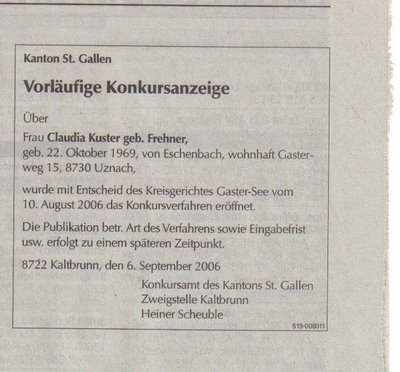
Was wird passieren ?
Wenn Ihr das wissen wollt, sendet uns (als Kommentar oder als Mail Eure Meinung, wir werden bei wirklichem Bedarf unsere "Prognose" veröffentlichen.
Wenn Sie eine Prognose nach der "H.E.- Methode" bevorzugen,
zünden Sie ein Räucherstäbchen mit passender Duftnote an und schauen mal hier in die Zukunft.
(Wir können uns mit . The "HE" method does not make friends, like our system better for us safer hit rate)
Hot "insider" tip [we are against insider trading, but in this case ;-)]
Now Claudia Kuster where the "fat" is, it is quite possible that they will maintain at least a small part of their "honor" and keep them.
It is not necessarily business-facilitating, "trustee" to have a bad credit rating (which might put off potential "victims" [with illusory promises of profit] when they know that private operators for almost 000 .-- Fr.200 are covered. Perhaps
bietet C.K. (um ein "bisschen Liquidität zu haben) einige ihrer Wertpapiere (100% sichere Titel auf Liegenschaften [u.a. auch Gasterweg], deklarierte und "andere" wer "problemlos" investieren will, fragt nach FL-Papieren (Wertpapiere in eben diesem Land hinterlegt) oder UBS-Wertschriften (Achtung,lasst Euch keine [teilweise sehr gut gemachte / gefälschte] Photokopien andrehen) , sollte die "Verkäuferin" kein "Musikgehör" haben, meldet Euch (nur per E-Mail, wir wollen uns keinen Ruf als "Steuerberater" im Blog einhandeln) , damit Ihr wisst, nach welchen Papieren Ihr fragen sollt. günstig zum Verkauf an.
Kontaktiert sie mal, (055 282 13 53 / 055 282 61 30) lasst Euch von der "Vorzimmerdame" (H.E. Ihr müsst ausdrücklich betonen, dass Ihr von C.K. nicht wie viele Anrufer Geld zurückfordert, sondern ihr welches geben wollt dann wird H.E. "ihre Chefin" nicht verleugnen ) nicht abwimmeln.
Wenn's nicht klappt, könnt Ihr's auch privat versuchen (055 290 13 25).
Wirklich, "die Chance".
Wenn die Betroffene nicht "spuren will",könnte es für diverse "Liegenschaftsbesitzer" (so sagt man doch zu den Personen, welche im Grundbuch [als "Eigentümer"] eingetragen sind) eng werden.
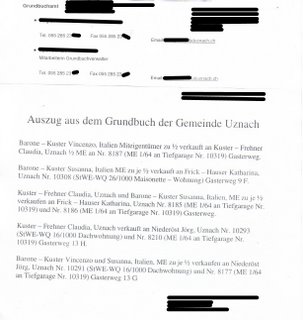
"Kartenhäuser" können wie "Luftschlösser" (Luftfirmen) zusammenfallen, wir blasen (die "Konstrukte" auf den Tisch),
wir veröffentlichen die "Geschäfte", wir zeigen den "Geldfluss" auf.
z.B. GB Unterwasser, Parz. 384 Ass.Nr.1718 (Ferdinand & Regula Frehner)
z.B GB Uznach, Parz. 10306 / 8187
z.B. GB Uznach, Parz. 10294 / 8211 / 8212
(siehe auch in TELSEARCH.CH unter Eingabe der Telefon - Nummer diese Liegenschaften von "Freunden und Kollegen":)
[055 280 61 63 / 055 280 64 10 / 055 282 16 43 / 055 280 53 75]
Mich nimmt's wunder, ich will sofort Look
note number / write and write it in the appropriate box.
NEW SUBSTANCE arrived
Claudia Kuster- Frehner have the sole say in the Deku AG. Michael De
nzler- Frehner is excreted.
From the "occupation" DE nzler - KU art remains the only KU art.
to Attack, is to get as long as what you
obtained the property (shares).
Hello Bankruptcy Office: CONSTRUCTS REVEAL!
access, before it is too late.
the HR - entry:
"Mitglied mit Einzelunterschrift" kennen wir, er war in allen diesen Kuster - Konstrukten noch immer der Anfang vom Ende .
DeKu "verwaltet" u.A. die Liegenschaften Parz. 243 / 244 in Kaltbrunn.
Diese wurden von GEON AG am 21.09.04 von der Besitzerin (Stump) erworben und bis dato an Dritte vermietet.
Liquidiert, versteigert, (wir bieten mit) macht die Guthaben der DeKu AG zu Geld.
Eventuell können sogar "in C.Kusters Schuld stehende" Gläubiger auf diesem Weg ihr Geld erhalten.
[C.K. gibt Schuldbriefe, welche auf Liegenschaften lasten, gegen Forderungen der Liegenschaftsbesitzer(innen)]

was re-cobbled together.
Claudia Kuster rises "officially" out, look at the new premises at that!
"Random" is the address identical to that of GEON AG.
"Random" is the Retired "Geschäftsührerin" this GEON AG.
H & K GmbH, formerly in Uznach, CH-320.4.057.195-6, Ver-
administration of real estate, construction of architectural works, etc.
limited liability company (SHAB No 84, 02
05th 2005 , p. 11, Publ 2,818,336). Statutes updated: 13th
09. 2006th Seat new sport: it. New domicile: Allmeind
-Strasse 11, 8716 Schmerikon. Retired persons and revenue
electronic signature: Kuster, Claudia, von Eschenbach SG, after in Uz-
, shareholder and director with sole-
written with a capital contribution vonCHF 19000th - Registered
people new or mutating: Cadosch, Stefan, of Vaz / Obervaz,
in Zurich, shareholder and director, writing with a sole-
, with an initial contribution of CHF 19000th -
diary No. 6786 dated 18.09.2006
(03,560,360 / CH-320.4.057.195-6 )
who believe it's your own fault!
Where is this good home if not on the office desk of Claudia Kuster?
[more publications (eg old-and tax-fraud) are in preparation, review progress]
Just look such a story in more detail. write or say what you think about it.









